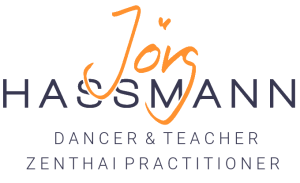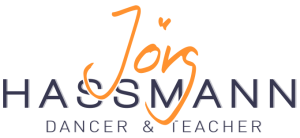‘Witnessing’ or: ‘eyes on work’!
Most people who have practiced CI will have been confronted with the word or concept of ‘witnessing’. And I guess the vast majority was – at least in the beginning – irritated. I use the term ‘witnessing’ quite a lot in my teaching but I still struggle with the word. It sounds so sterile and distant. A breeze from the court world with the concept of eventually judging a case makes me shiver a little.
One big gift of witnessing though is that the witness is not a judge. The role of the witness is to share his observations as clearly and neutral as possible. Being witnessed means that I am first of all seen, noticed and somehow acknowledge without being judged. One problem about dance – especially improvised dance – is that it just disappears. It doesn’t really leave a trace, very different to painting, where the act of painting leaves a picture behind that gives hints to the process of its creation. Music is easily recordable. Acting uses usually characters we can identify with and creates often stories, which are easier to remember than abstract movements of a dance.
Being witnessed in a dance means, that my dance leaves a trace in me and my witnessing partner, even though our experiences of my dance will probably be very different. For me it is similar to talking out my thoughts to maybe just clarify my mind. The fact that someone is there, listening and trying to engage with what I say is so different to just talking to myself. Often it doesn’t even need a verbal response from my partner. I experience it in my teaching as a core human need to be heard and seen. Maybe as a reassurance that we exist and that that is ok or even valuable. A reason for keeping feedback circles free of discussion is, to keep the judgement out of the game. Being heard is often more important than being told how good we were.
In a way I am a fan of ‘witnessing’ and I use it a lot. But I still struggle with the word. It stays cold and distant. In the practice of witnessing I see the importance of staying independent. The person who I witness shouldn’t be driven by fulfilling my needs and expectations. But I am more than a neutral machine like camera. I am highly subjective in my perception. I am in charge of finding my interest in what I see. But I do it with an empathic attitude, highly willing to acknowledge what I see and not to dismiss it.
‘Empathic observing’ is a term that I found while co-teaching with Christine Mauch. I like an emotional warmth behind the witnessing. The ‘observing’ part of the empathic observer takes care of the non-judgemental attitude. At the same time observing already has a sense of self motivated exploration.
I was just teaching a morning series of two hour classes with a fixed group. We worked a lot with hands on. Rather technical work that was supposed to help finding the physical sensation and inner understanding of movements. I wanted to counterbalance this work with witnessing, inviting the outer world into the dance as well. And on my way to the studio I found this term, that felt so adequat: eyes-on-work! Instead of witnessing. It is kind of hands-on-work, where we touch our partner through distance with our eyes.
The starting point in the hands-on-work that I like is a simple touch. Hands simply finding a place on the partners body, just trying to arrive, to sense what is there in this moment: the shapes and movements under my hands, the texture of clothes or skin; noticing if I am shy and hesitant in the touch or if I fall into the trap of pleasing or healing my partner. No, just simply being alive and present in the touch, keeping a sense of my own body and its needs.
I very much like this state of simply arriving and being present without doing anything yet. There is something neutral in it, which is also very warm hearted. And I guess in witnessing the starting point is very similar, the inner attitude. Tuning in, seeing shapes in the space, noticing a basic quality, speed, rhythm. Seeing colours and textures…
From there the journey starts. Hands-on and eyes-on work is an activity. Listening, acknowledging and following is the underlying note. But then I can explore. I might want to change the positions of my hands, give more weight, support directions … doing what I need to understand how this body functions. Even a simple touch influences the touched person. The way I use hands-on work means that the touched person is active, too. As the worked on person I can direct my awareness, I can adjust and change positions and eventually move. All this I use to understand how my body works most efficiently and with maximum physical delight. The hands on my body inspire my research and give information I couldn’t give to myself.
While witnessing or eyes-on-work something very similar happens. I have many options where to put my eyes: to one specific body part, to the whole shape, to relationships of the body with the space or other dancers, coincidental timings. I can imagine to look through a camera, creating my own movie. In a lecture of Kristin Horrigan about ‘composition’ I suddenly found the term ‘aesthetic sensations’. While physical sensations are the base for my movement exploration, aesthetic sensations are a possible base for my eyes-on exploration. I notice which visual input gives me a sense of satisfaction, feels kind of yummy, sweet or awkward.
But I can also watch with a focus on physical sensations in a sense of ‘How might a movement feel in my partners body, or how would it feel in my body?’
I haven’t used the term ‘eyes-on-work’ yet. It is just a fresh discovery. But I am very attracted by what it encourages me to do as a witness. To listen, to explore, to be inspired, to give a frame for my partner to explore himself, to be connected and still self-responsible.
A disadvantage of ‘Eyes-on-work’ is that it is more effort to get it out of my mouth and into spoken sentences. It is more difficult to use in guiding exercises than ‘witness’ and ‘witnessing’. I’d be happy if anyone found ways to use it in his or her practice and would be happy to hear about those experiences.


